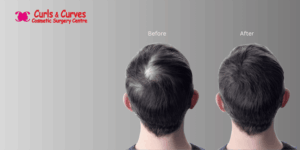Gynecomastia, the medical term for enlarged male breasts, is a very frequent problem all over the world for men. It can happen on either one or both breasts and is often the reason behind psychological distress because of the man’s physical appearance. Although gynecomastia is a condition that is usually benign, knowing about its different types and causes can help men choose the best treatment.
This blog will focus on the different types of gynecomastia and give an idea about their causes, symptoms, and treatments. This will enable you to have a clear understanding of the condition and help you take the necessary steps in managing or treating it.
What is Gynecomastia?
Gynecomastia enlarged male breasts is a condition that can arise at infanthood, puberty, and the old age stage of life. The reasons differ from unknown reason, hormonal fluctuations and medication side effects to some pre-existing health conditions. Based on the type and look, gynecomastia can be divided into three classes.
Types of Gynecomastia
Although gynecomastia in all its forms refers to the growth of breast tissue in men, the reasons for this and its manifestations may vary. A summary of the main types of gynecomastia is given below, which are generally classified depending on the age of the patient, the physical characteristics of the patient, and the underlying causes.
1. Physiological Gynecomastia
Physiological gynecomastia is a natural process that happens in boys and men at different stages of life due to hormonal changes. Gynecomastia is typically transient and goes away on its own without the need for medical treatment.
a. Neonatal Gynecomastia
This type occurs in newborns due to the transfer of estrogen from the mother to the baby during pregnancy. Nearly 60%-90% of male babies who are born may experience breast enlargement shortly after birth. On the other hand, this condition is generally temporary and resolves in a matter of weeks as the maternal hormones are out of the baby’s system.
b. Pubertal Gynecomastia
Puberty is a time when boys may go through hormonal fluctuations that result in the temporary enlargement of their breasts. During puberty, up to half of adolescent boys showed symptoms of gynecomastia, but in most cases, it went away within six months to two years when hormone levels close to their normal range. Most of the time, no treatment is needed.
c. Adult Gynecomastia
The deficiency of the male hormone testosterone combined with a relatively stable amount of estrogen in old men can contribute to the development of gynecomastia. This symptom is usually found in men above the age of 50, and it may be further amplified by weight gain, medications, or some existing health conditions.
2. Unilateral and Bilateral Gynecomastia
Gynecomastia may affect the enlargement of one or both breasts, and hence this condition is classified accordingly.
a. Unilateral Gynecomastia
Unilateral gynecomastia is when one breast gets bigger than the other.
b. Bilateral Gynecomastia
In bilateral gynecomastia, the enlargement of both breasts can be symmetric or asymmetric. This is the most common type of gynecomastia.
3. True Gynecomastia vs. Pseudo gynecomastia
Making a distinction between real gynecomastia and pseudo gynecomastia is very important because they consist of different tissues and have different treatment procedures.
a. True Gynecomastia
The enlarged tissue in true gynecomastia is rubbery and is positioned usually under the nipple.
b. Pseudo gynecomastia
Pseudo gynecomastia, unlike real gynecomastia, is characterized by the accumulation of fat tissue in the chest area instead of the breast tissue growth. Liposuction can solve the problem.
4. Drug-Induced Gynecomastia
Some medications and drugs can also result in gynecomastia by changing the level of hormones. Drug-caused gynecomastia is usually caused by:
- Anabolic steroids: Commonly used by bodybuilders.
- Anti-androgens: For the treatment of prostate cancer which is the condition in the case of these drugs, they inhibit the action of testosterone which in turn causes increased activity of estrogen.
- Antidepressants: Some antidepressants can act against hormonal regulation, thus raising the risk of getting gynecomastia.
- Alcohol and recreational drugs: Excessive alcohol, marijuana, etc.
Usually, drug-induced gynecomastia can be reversed by discontinuing the offending medication or substance. On the other hand, some drugs being used for a long time can lead to growth of breast tissue permanently, which requires surgical intervention.
5. Idiopathic Gynecomastia
There are times when gynecomastia is still classified as idiopathic, even when the cause cannot be found. In these cases, there is no identifiable cause, for example, medications or underlying health conditions, and the condition may persist despite medical evaluations. Idiopathic gynecomastia, however, can be treated with surgical options like male breast reduction if it causes severe discomfort or psychological distress.
Treatment Options for Gynecomastia
Generally, no treatment is require if gynecomastia is temporary or mild. Nevertheless, for persistent or severe cases, there are a few available treatment options:
1. Medication Adjustments
If medications or drugs are responsible for gynecomastia, yet it can be treated if the doctor lowers the dosage or prescribes another medication not causing breast tissue growth.
2. Surgical Treatment
For men with severe or long-lasting gynecomastia, surgical options like male breast reduction may be recommended. This procedure involves liposuction and removing excess breast tissue to restore a more masculine appearance. It is a common treatment for true gynecomastia.





